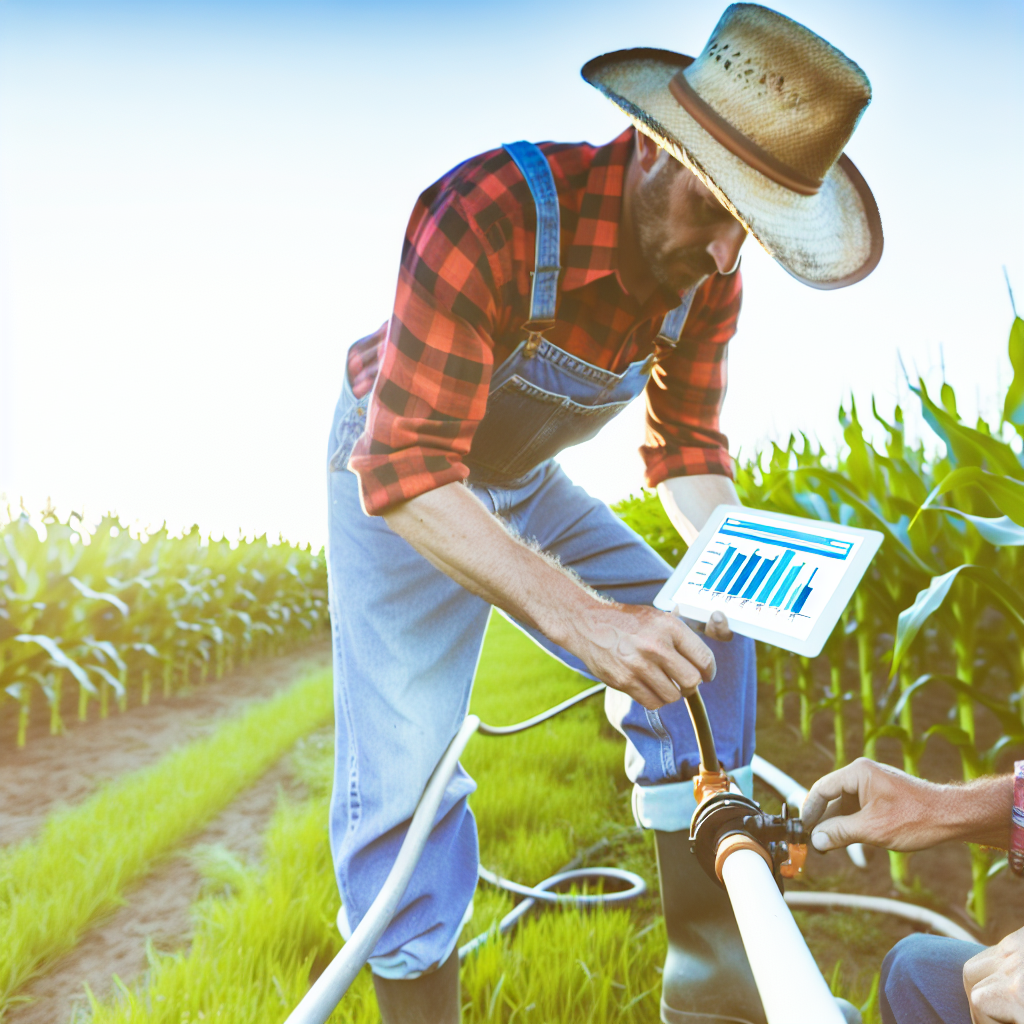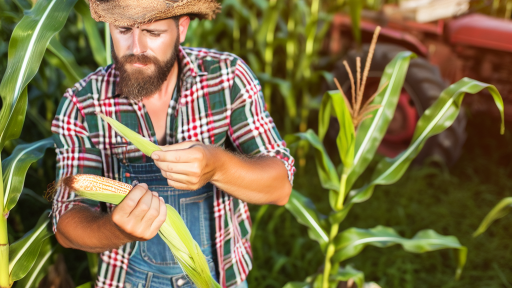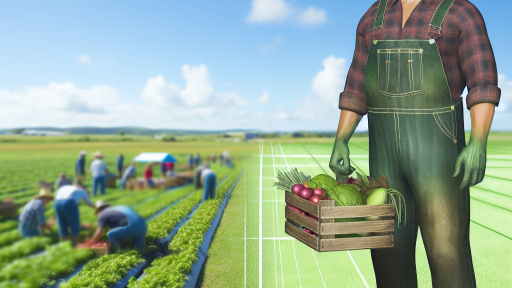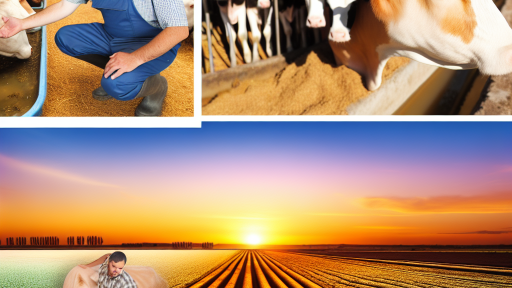Introduction to Sustainable Irrigation
Importance of Sustainable Irrigation
Sustainable irrigation plays a vital role in modern farming.
It conserves water, which is increasingly scarce.
This method enhances crop productivity without exhausting resources.
Moreover, it reduces adverse environmental impacts.
Farmers benefit from increased efficiency and resilience.
Impact on Agriculture and Ecosystems
Sustainable irrigation impacts both agricultural yields and ecosystems.
It helps maintain healthy soil and thriving crops.
Furthermore, it fosters biodiversity by supporting various organisms.
Effective irrigation techniques contribute to food security.
Farmers implementing these practices can adapt to climate change.
Transitioning to Sustainable Techniques
Transitioning to sustainable irrigation requires education and commitment.
Farmers must understand various techniques available.
Additionally, collaboration with agricultural experts proves beneficial.
Access to resources and technology facilitates this transition.
Success stories from early adopters can inspire others.
Transform Your Agribusiness
Unlock your farm's potential with expert advice tailored to your needs. Get actionable steps that drive real results.
Get StartedFuture of Sustainable Irrigation
The future of sustainable irrigation looks promising.
Advancements in technology will enhance irrigation practices.
Automation and data-driven techniques can optimize water use.
Furthermore, community engagement can spread awareness.
Encouraging policy changes can support sustainable practices.
Types of Sustainable Irrigation Techniques
Overview of Methods
Sustainable irrigation techniques play a vital role in modern agriculture.
They help conserve water and promote efficient resource use.
Farmers utilize various methods to achieve sustainability.
Here are some of the most common techniques.
Drip Irrigation
Drip irrigation delivers water directly to the root zone.
This method minimizes evaporation and runoff.
Farmers can save significant amounts of water.
Additionally, it promotes healthier plant growth.
Rainwater Harvesting
Rainwater harvesting captures and stores rainwater.
Farmers can reuse this water for irrigation purposes.
This technique reduces dependence on groundwater sources.
Moreover, it helps manage stormwater runoff.
Mulching
Mulching involves covering the soil with organic materials.
This practice conserves soil moisture effectively.
It also suppresses weeds and enhances soil quality.
Consequently, farms can improve crop yields.
Soil Moisture Management
Monitoring soil moisture levels is crucial.
Farmers can adjust irrigation schedules based on data.
This approach prevents over-irrigation and under-irrigation.
Showcase Your Farming Business
Publish your professional farming services profile on our blog for a one-time fee of $200 and reach a dedicated audience of farmers and agribusiness owners.
Publish Your ProfileModern technology, like soil sensors, aids in this practice.
Contour Farming
Contour farming involves planting along the natural contours of the land.
This method reduces soil erosion and water runoff.
It improves water absorption and sustains soil health.
Farmers benefit from improved productivity and sustainability.
Remote Sensing Technologies
Remote sensing technologies analyze water usage and crop health.
Drones and satellites provide valuable data for farmers.
This information helps optimize irrigation practices.
Consequently, water waste diminishes significantly.
Drip Irrigation: Efficiency and Water Conservation Benefits
Overview of Drip Irrigation
Drip irrigation delivers water directly to the plant roots.
This technique maximizes water absorption and minimizes waste.
Farmers can adjust the system for various crops and soil types.
Efficiency of Drip Irrigation
Drip irrigation drastically reduces water usage compared to traditional methods.
It can save up to 50% of the water used in conventional irrigation systems.
Additionally, this method promotes uniform water distribution across fields.
Benefits of Water Conservation
Conserving water helps protect local water sources.
This approach ensures sustainability for future farming practices.
Moreover, it minimizes the risk of soil erosion and nutrient depletion.
Improved Crop Yields
Drip irrigation leads to healthier plants and improved crop yields.
Watering at the root zone encourages optimum plant growth.
Farmers often notice shorter harvest times as a result.
Cost-Effectiveness of Installation
Initial installation costs can be offset by decreased water bills.
The long-term savings make drip irrigation a financially viable option.
Furthermore, maintenance costs remain low compared to traditional systems.
Environmental Impact
This method helps reduce water pollution by limiting runoff.
It also decreases energy consumption associated with pumping water.
Consequently, drip irrigation promotes a healthier ecosystem.
Farmers’ Transition to Drip Irrigation
Farmers worldwide are adopting drip irrigation for its numerous benefits.
It represents a commitment to sustainable farming practices.
As awareness grows, more producers will likely transition to this efficient method.
Discover More: Connecting Farms with Schools: A Farmer’s Guide
Rainwater Harvesting: Techniques and Implementation for Farms
Introduction to Rainwater Harvesting
Rainwater harvesting is an effective technique for sustainable farming.
This method collects and stores rainwater for agricultural use.
It reduces dependency on traditional water sources.
Farmers can implement several systems to optimize this process.
Types of Rainwater Harvesting Systems
Various systems exist to collect rainwater.
First, rooftop harvesting systems are common in urban areas.
These systems utilize roofs to capture rainwater.
Next, surface runoff collection allows larger areas to be utilized.
This method captures rainwater from fields and roads.
Showcase Your Farming Business
Publish your professional farming services profile on our blog for a one-time fee of $200 and reach a dedicated audience of farmers and agribusiness owners.
Publish Your ProfileFinally, underground cisterns store collected rainwater efficiently.
Steps for Implementing Rainwater Harvesting
Implementing a rainwater harvesting system requires careful planning.
Begin by assessing your farm’s rainwater catchment potential.
Then, design a suitable harvesting system based on your needs.
Consider factors like rainfall patterns and storage capacity.
Next, install gutters and downspouts to channel water effectively.
Ensure that storage tanks are clean and properly sealed.
Finally, develop a maintenance schedule for your system.
Benefits of Rainwater Harvesting
Rainwater harvesting offers numerous benefits for farms.
It helps conserve potable water resources.
This method can significantly reduce water bills.
Furthermore, it enhances soil moisture levels.
Ultimately, farmers can increase crop yield and resilience.
Challenges and Considerations
While beneficial, rainwater harvesting has challenges.
Initial setup costs can be a barrier for some farmers.
Additionally, maintenance requires ongoing attention.
Farmers must also consider local regulations regarding water usage.
Strategic planning can help mitigate these challenges.
Real-World Examples
Several farms successfully implement rainwater harvesting.
The Green Leaf Farm in Oregon collects and stores rainwater.
They report reduced irrigation costs and improved crop yields.
Similarly, Sunny Fields Farm in California uses underground cisterns.
This approach has increased water efficiency during dry spells.
See Related Content: Local Food Sourcing Tools and Resources for Farmers
Soil Moisture Sensors: Technology Advancements and Benefits
Introduction to Soil Moisture Sensors
Soyl moisture sensors play a crucial role in modern farming.
They measure the water content in soil accurately.
This technology helps farmers optimize irrigation practices.
Additionally, they provide valuable data for crop management.
Advancements in Technology
Recent innovations have significantly enhanced sensor capabilities.
Wireless sensors enable remote monitoring of soil conditions.
Farmers can access real-time data from their smartphones.
Furthermore, integration with IoT devices improves system efficiency.
Benefits of Using Soil Moisture Sensors
Utilizing soil moisture sensors offers numerous advantages.
- They reduce water usage by providing precise irrigation needs.
- Water conservation leads to significant cost savings.
- These sensors improve crop yields through efficient water management.
- Farmers can minimize fertilizer runoff, protecting the environment.
Real-World Applications
Various farms have successfully implemented this technology.
For example, Green Valley Farms uses sensors for their vineyards.
They monitor soil moisture levels to enhance grape quality.
Similarly, Sunny Meadows employs sensors in their vegetable fields.
This helps them water crops more efficiently and sustainably.
Future of Soil Moisture Sensors
The future holds even more advancements for soil moisture sensors.
Developers are working on improving accuracy and affordability.
Showcase Your Farming Business
Publish your professional farming services profile on our blog for a one-time fee of $200 and reach a dedicated audience of farmers and agribusiness owners.
Publish Your ProfileAs technology evolves, more farmers will adopt these tools.
This will promote sustainable irrigation practices globally.
Gain More Insights: Local Food Sourcing Strategies for Small Farms

Crop Rotation and Its Role in Reducing Water Usage
Introduction to Crop Rotation
Crop rotation involves alternating different crops in the same area across seasons.
This method enhances soil health and optimizes water usage.
Farmers can reduce water dependency by planting a variety of crops.
Benefits of Crop Rotation for Water Conservation
Crop rotation improves soil structure, allowing better water retention.
Additionally, healthy soils can absorb and store more rainfall.
This absorption leads to less runoff and minimal erosion.
Enhancing Soil Nutrients
Different crops provide various nutrients to the soil.
For example, legumes fix nitrogen, enriching soil fertility.
Fertile soil needs less artificial fertilizer, reducing water usage for irrigation.
Weed and Pest Management
Crop rotation reduces the prevalence of pests and diseases.
This leads to healthier crops that require less water to survive.
Furthermore, less pesticide use minimizes chemical runoff into water systems.
Case Studies and Examples
Farmers like Maria Gonzalez have successfully implemented crop rotation.
Her farm noticed a significant decline in water needs after rotating crops.
Consequently, her yield improved while operating sustainably.
Implementing Crop Rotation Strategies
Farmers should assess their land and climate when choosing crops.
Consideration of seasonal weather patterns aids in effective planning.
Moreover, collaborating with agricultural experts enhances decision-making.
Importance of Crop Rotation for Sustainable Agriculture
Crop rotation promotes sustainable farming practices.
It effectively reduces water usage while increasing crop yields.
Therefore, it stands as a crucial technique in modern agriculture.
Learn More: Sustainable Practices In Animal Farming
Integrating Renewable Energy in Irrigation Systems
Benefits of Renewable Energy in Agriculture
Renewable energy enhances irrigation efficiency significantly.
It reduces dependency on non-renewable energy sources.
Farmers can lower their operating costs over time.
Additionally, it minimizes environmental impact.
Using solar, wind, or biomass can power irrigation systems.
Types of Renewable Energy Sources
Solar energy is one of the most common choices for farms.
It involves using photovoltaic panels to generate electricity.
Wind energy is another effective option.
Wind turbines can provide reliable power for irrigation systems.
Biomass energy utilizes organic materials for energy production.
Implementing Renewable Energy in Irrigation Systems
Assessing the local climate is the first step.
Farmers need to evaluate renewable energy potential.
Next, they should select appropriate technology for their needs.
Solar pumps are ideal for areas with abundant sunlight.
In contrast, wind turbines work well in breezy locations.
Showcase Your Farming Business
Publish your professional farming services profile on our blog for a one-time fee of $200 and reach a dedicated audience of farmers and agribusiness owners.
Publish Your ProfileCase Studies of Successful Implementation
Sunny Acres Farm, a local farm, uses solar energy.
They installed solar panels to power their irrigation system.
This led to a 40% reduction in energy costs.
Similarly, Fresh Fields Farm utilizes wind energy.
They harness wind power to operate their irrigation pumps.
Challenges and Considerations
Initial investment can be substantial for renewable energy systems.
Farmers may face challenges in financing these projects.
Additionally, maintenance and repair require expertise.
Choosing the right technology for specific conditions is crucial.
Furthermore, regulatory requirements can vary by location.
Case Studies: Successful Implementations of Sustainable Irrigation in Various Regions
Innovative Solutions in California
In California, many farmers adopted drip irrigation systems.
This technique allows precise water delivery to plants.
Farmers like Maria Gonzalez report increased yields.
Moreover, water usage decreases significantly with drip systems.
As a result, drought resilience improves across the region.
Transformative Practices in Israel
Israel is renowned for its advanced irrigation technologies.
Farmers utilize desalination and drip irrigation extensively.
This approach efficiently converts seawater into freshwater.
Additionally, farmers monitor soil moisture levels carefully.
Consequently, yields have tripled in some areas.
Community Efforts in Kenya
In Kenya, community-led projects promote sustainable irrigation.
Farmers implement rainwater harvesting systems.
This technique stores water for dry seasons effectively.
Communities share resources to build storage facilities.
Thus, food security improves significantly in rural areas.
Advanced Monitoring Techniques in Australia
Australian farmers employ advanced moisture sensors.
These devices provide data on soil hydration levels.
Farmers can adjust irrigation schedules accordingly.
This practice leads to resource optimization and cost savings.
Moreover, it enhances crop health and yields consistently.
Cooperative Models in Brazil
Brazilian farmers have established cooperative farming models.
They share irrigation technologies and knowledge among themselves.
As a result, collective learning boosts productivity rates.
Furthermore, water conservation practices are now standard.
Such collaborations empower local farming communities effectively.




